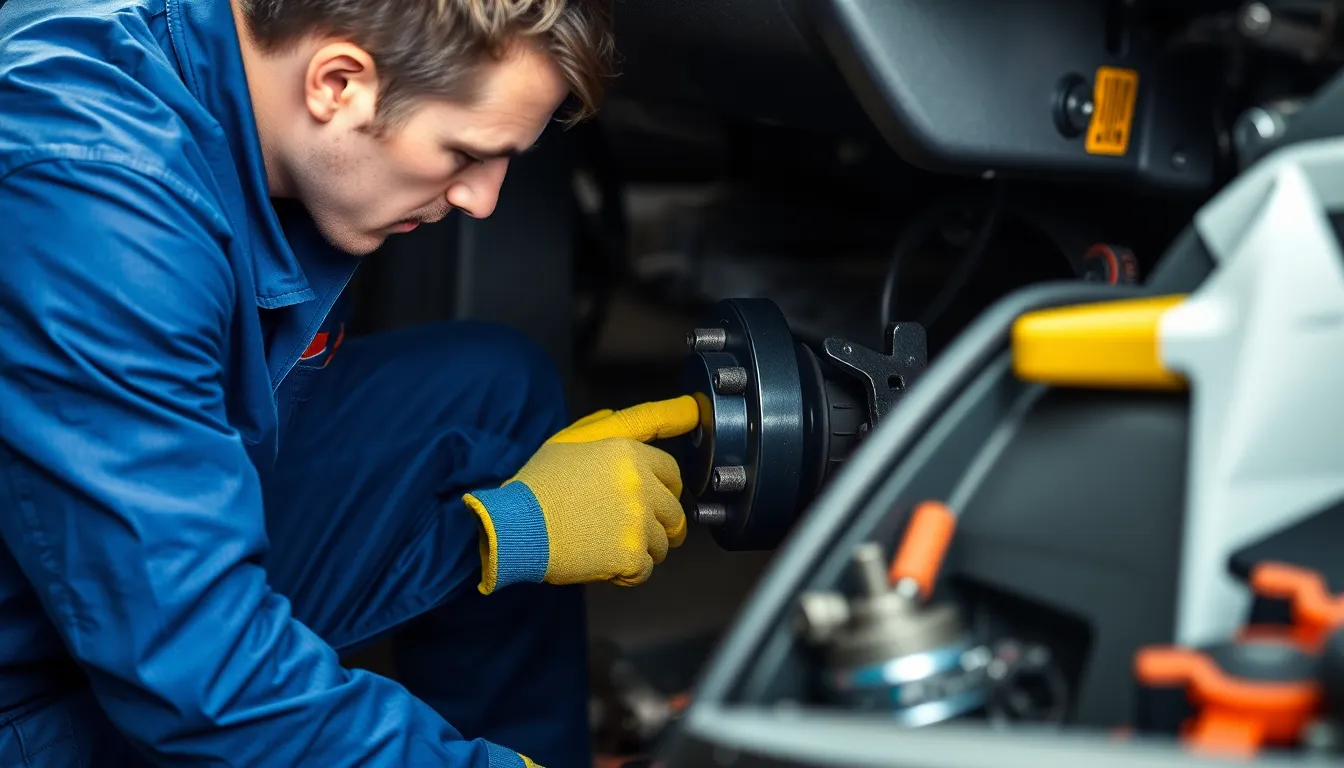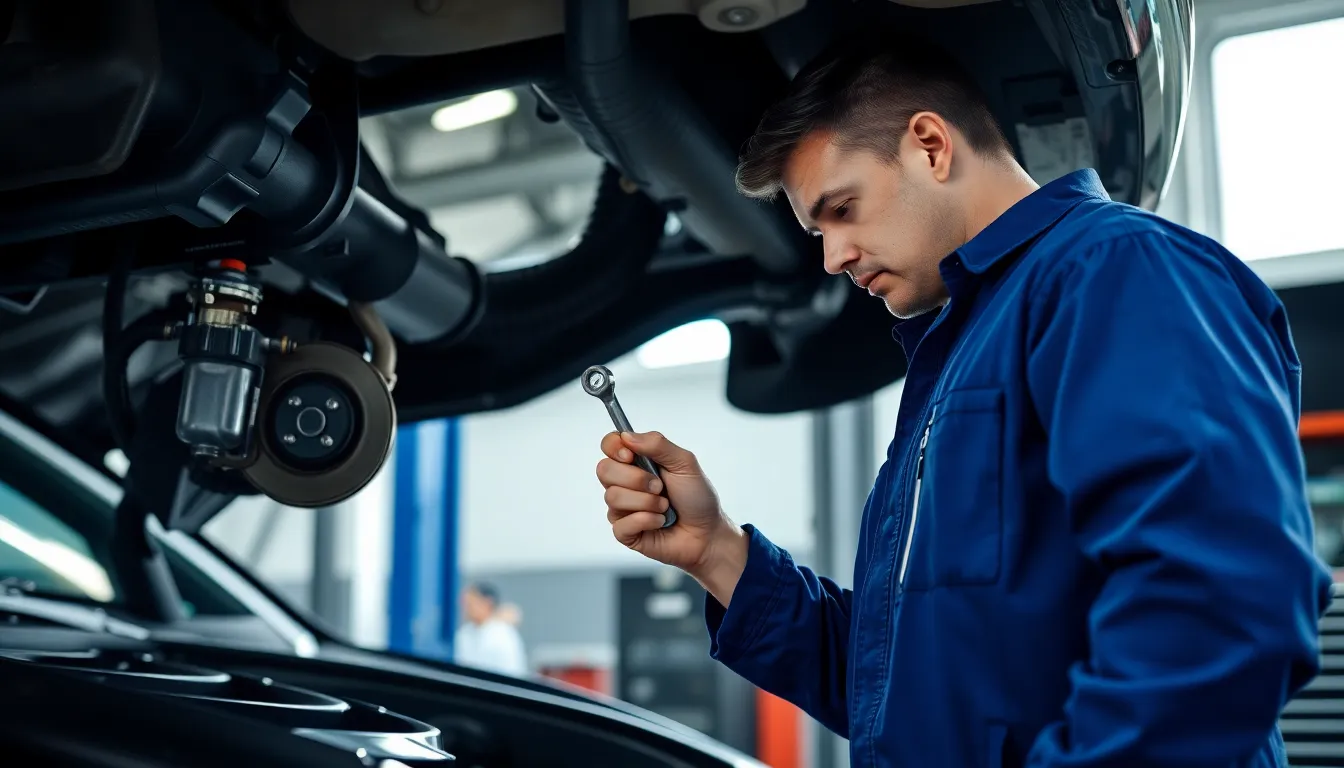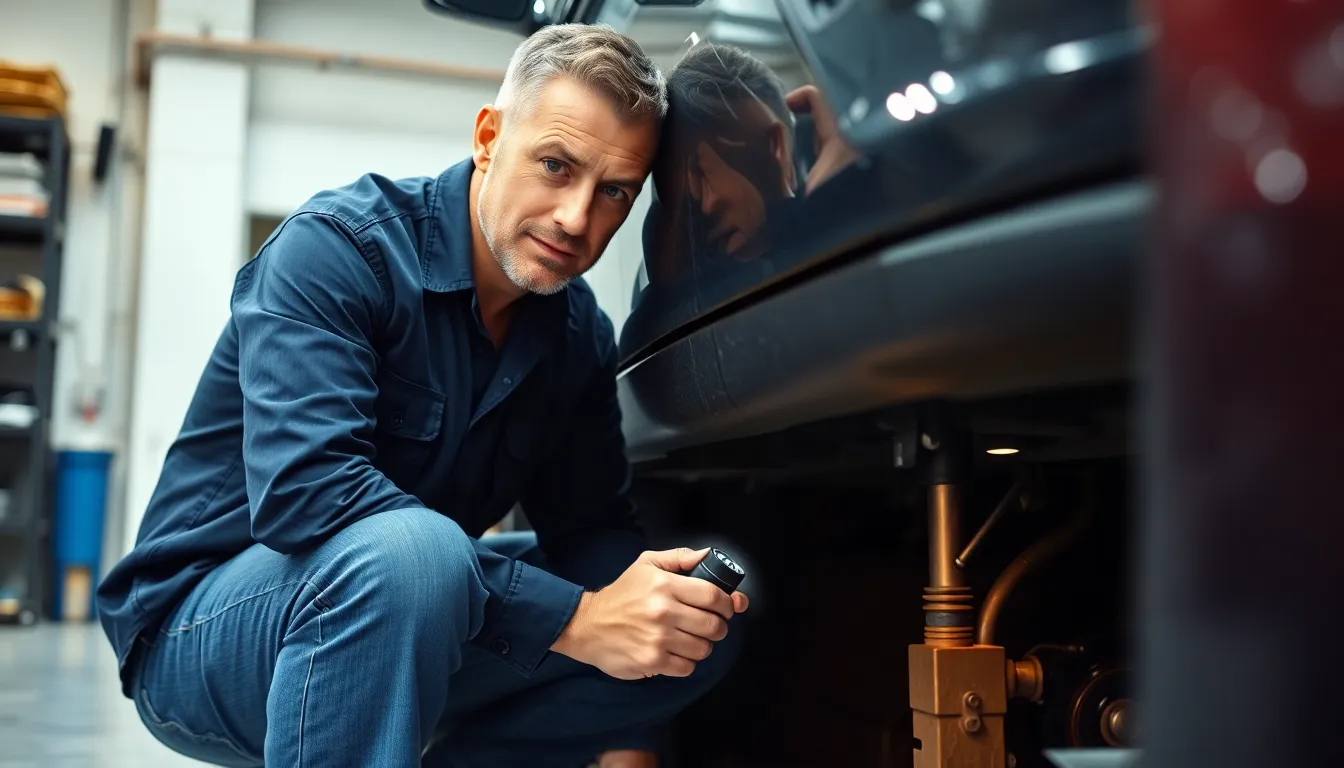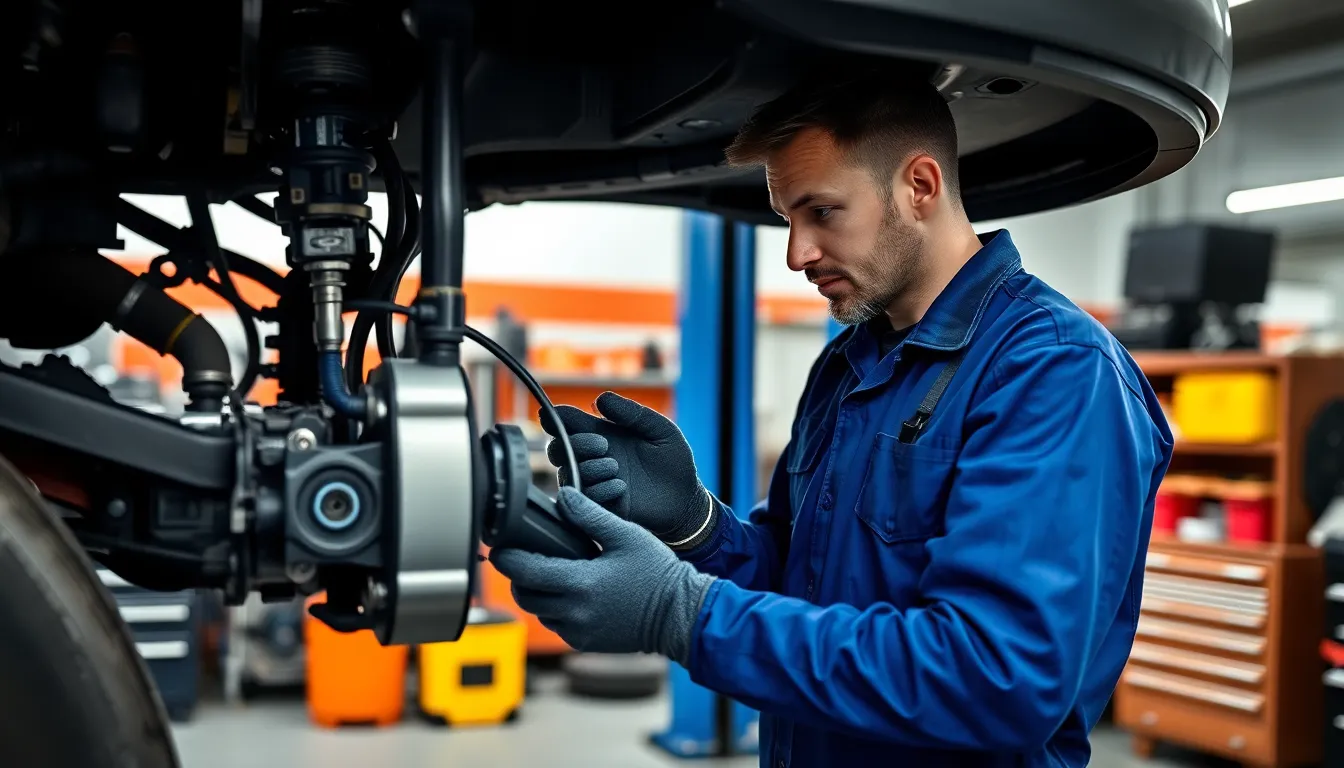We’ve all been there – you’re running late for work and your car won’t start because the brake pedal feels like it’s stuck in concrete. This frustrating scenario affects millions of drivers worldwide and can turn a normal morning into a stressful ordeal.
The inability to press your brake pedal to start your car isn’t just an inconvenience – it’s often a sign of underlying mechanical issues that need immediate attention. From faulty brake boosters to frozen brake lines, several culprits could be preventing your vehicle from recognizing that essential brake signal required for ignition.
Understanding why this happens and knowing the right troubleshooting steps can save you time, money, and the embarrassment of being stranded. We’ll walk you through the most common causes, quick fixes you can try yourself, and when it’s time to call a professional mechanic.
Common Causes of Brake Pedal Problems
We’ve identified several mechanical failures that commonly prevent brake pedals from responding properly during vehicle startup. These issues range from simple electrical problems to complex transmission malfunctions.
Brake Switch Malfunction
Brake switch failure represents the most frequent cause of startup problems when pressing the brake pedal. The brake light switch sends signals to the vehicle’s computer system to authorize engine ignition. Modern vehicles contain two types of brake switches: the brake light switch and the brake pedal position switch.
Symptoms of brake switch malfunction include:
- Brake lights remain illuminated constantly
- Brake lights don’t activate when pressing the pedal
- Engine refuses to start even though proper pedal pressure
- Cruise control malfunctions during driving
We typically find brake switches located near the brake pedal assembly under the dashboard. These components cost between $15 to $45 and require basic electrical knowledge for replacement.
Dead or Weak Battery
Battery voltage below 12.4 volts prevents the brake pedal safety system from functioning correctly. The brake pedal position sensor requires adequate electrical power to communicate with the engine control module. Weak batteries cause intermittent electrical connections that disrupt the brake-to-start sequence.
Testing battery strength involves:
- Measuring voltage with a multimeter
- Checking battery terminals for corrosion
- Examining cable connections for tightness
- Loading testing the battery under actual starting conditions
We recommend replacing car batteries every 3 to 5 years depending on climate conditions and driving habits. Cold weather reduces battery capacity by 20% to 50% compared to optimal temperatures.
Faulty Brake Pedal Assembly
Brake pedal assembly problems occur when mechanical components wear out or break within the pedal mechanism. The brake pedal connects to multiple systems including the master cylinder, brake booster, and electronic sensors. Physical damage to the pedal assembly prevents proper signal transmission to the vehicle’s computer.
Common brake pedal assembly issues include:
- Bent or damaged pedal arms
- Worn pivot bushings
- Broken return springs
- Misaligned sensor mounting brackets
We observe brake pedal assembly problems more frequently in vehicles with high mileage or those exposed to harsh driving conditions. Replacement costs range from $150 to $400 depending on vehicle make and model.
Transmission Issues
Transmission control modules sometimes interfere with brake pedal startup sequences in automatic vehicles. The transmission must detect proper brake pedal engagement before allowing the engine to start. Park/neutral position switches work together with brake pedal sensors to ensure safe vehicle operation.
Transmission related brake pedal problems manifest as:
- Engine cranks but won’t start in park position
- Intermittent starting issues when shifting between park and neutral
- Dashboard warning lights related to transmission systems
- Unusual transmission fluid leaks near the brake pedal area
We find transmission issues affecting brake pedal function most commonly in vehicles with over 100,000 miles. These problems require diagnostic scanning tools to identify exact fault codes within the transmission control system.
Diagnosing the Problem

We encounter brake pedal starting issues when system-exact and mechanical components fail to communicate properly with our vehicle’s ignition system. Modern vehicles require precise brake pedal recognition to activate the ignition switch or starter relay.
Checking the Brake Light Switch
We start our diagnosis by examining the brake light switch since it’s the most common culprit in brake-to-start failures. This component sends critical signals to our vehicle’s computer system to authorize engine ignition. Modern vehicles depend on this switch to detect when we press the brake pedal.
Misalignment represents the primary brake light switch failure we encounter during inspections. We locate this switch near the brake pedal assembly and check for proper positioning relative to the pedal arm. Disconnected wiring harnesses create another frequent issue that prevents signal transmission to the ignition system.
Failed brake light switches exhibit exact symptoms we can identify during our inspection. Constantly illuminated brake lights indicate switch malfunction even when we’re not pressing the pedal. Engine refusal to start even though proper brake pedal pressure confirms switch-related communication breakdown with our vehicle’s computer.
Testing Battery Voltage
We measure battery voltage to eliminate electrical system malfunctions that disrupt brake pedal position detection. Weak batteries cause electrical components including brake position sensors to operate improperly or fail completely.
Our multimeter testing reveals optimal battery performance at 12.6 volts when the vehicle sits turned off. Voltage readings below this threshold indicate insufficient power for proper brake system communication. We connect the multimeter’s positive lead to the battery’s positive terminal and the negative lead to the negative terminal for accurate measurements.
Electrical system disruption affects brake-to-start sequences in vehicles with sophisticated ignition interlock systems. Low voltage conditions prevent brake light switches from sending proper signals to ignition control modules. We observe this issue most frequently in vehicles with push-button start systems that rely on multiple electrical inputs.
Inspecting Brake Pedal Movement
We examine physical brake pedal operation to identify mechanical obstructions preventing proper movement and switch activation. Floor mats represent the most common physical blockage we discover during brake pedal inspections. Debris accumulation around the pedal assembly creates another frequent obstruction source.
Bunched material underneath brake pedals restricts full pedal travel necessary for switch engagement. We remove floor mats and clear away any accumulated debris to restore proper pedal range of motion. This inspection takes seconds but resolves many brake-to-start issues we encounter.
Brake caliper rust develops when vehicles sit unused for extended periods or operate in humid environments. This corrosion limits brake piston movement and increases pedal pressure requirements beyond normal switch activation thresholds. We identify this condition by feeling excessive resistance when pressing the brake pedal compared to normal operation.
Step-by-Step Troubleshooting Guide

Following proper diagnostic procedures helps identify the root cause of brake pedal startup failures. We’ve organized these troubleshooting steps from basic safety checks to advanced mechanical inspections.
Initial Safety Checks
Parking the vehicle securely and applying the parking brake protects us during diagnostic work. We remove the keys from the ignition and ensure the engine remains completely off before beginning any inspection.
Brake pedal operation testing involves pressing the pedal with the engine off to assess responsiveness. Hard pedals that resist movement indicate potential brake booster or hydraulic system failures requiring immediate attention.
Brake fluid inspection focuses on the master cylinder reservoir where fluid levels must stay between MIN and MAX indicators. Low fluid levels often signal leaks in the brake system that compromise both safety and starting capability.
| Safety Check Component | Normal Condition | Warning Signs |
|---|---|---|
| Brake Pedal Feel | Smooth depression | Hard, stuck, or spongy |
| Brake Fluid Level | Between MIN/MAX lines | Below minimum mark |
| Parking Brake | Fully engaged | Loose or ineffective |
Testing Electrical Components
Fuse and relay inspection starts at the brake switch fuse box where blown components prevent proper signal transmission. We locate these electrical components using the vehicle’s fuse diagram and replace any damaged parts immediately.
Brake light circuit testing requires turning the ignition to ON position without starting the engine. Pressing the brake pedal activates brake lights if the electrical system functions correctly.
Brake switch examination becomes critical when brake lights fail to illuminate during pedal depression. This switch controls both brake light activation and engine start authorization in modern vehicles with push button or electronic ignition systems.
Wiring and connector inspection reveals loose, corroded, or damaged connections that interrupt electrical signals. We check all brake switch wiring harnesses and clean corroded terminals to restore proper connectivity.
Mechanical Inspection Process
Pedal travel examination identifies restricted movement caused by brake booster failures or master cylinder problems. Stiff pedals that resist normal depression indicate vacuum or hydraulic system malfunctions.
Brake booster testing involves pumping the pedal with the engine off to remove vacuum assistance. We hold moderate pressure while starting the engine and observe pedal drop that confirms proper booster operation.
Master cylinder inspection focuses on external leaks, cracks, and internal wear patterns. Defective cylinders require immediate replacement to restore both braking performance and starting capability.
Booster pin gap measurement ensures proper spacing between the brake booster and master cylinder connections. Incorrect gaps prevent effective force transmission and require adjustment to manufacturer specifications.
| Component | Test Method | Expected Result |
|---|---|---|
| Brake Booster | Engine start with pedal held | Pedal drops slightly |
| Master Cylinder | Visual leak inspection | No fluid seepage |
| Booster Pin Gap | Gap measurement | Within spec range |
Quick Fixes You Can Try

Before calling a professional mechanic, we can attempt several simple answers that often resolve brake pedal starting issues. These troubleshooting steps address the most common causes and require only basic tools.
Pumping the Brake Pedal
Press the brake pedal several times with the engine off until it feels firm and hard. This technique builds up hydraulic pressure in the brake system when vacuum assistance isn’t available. Hold the pedal down firmly and attempt to start the engine while maintaining constant pressure.
Once the engine starts, the pedal should sink slightly as vacuum assistance activates through the brake booster. This sinking motion confirms that our brake booster system functions properly and generates the necessary vacuum pressure for normal operation.
If the pedal remains hard and doesn’t sink after engine startup, our brake booster vacuum system likely has a leak or diaphragm failure that requires professional attention.
Checking Fuses
Locate the fuse box and inspect fuses related to the brake light switch and ignition system using the owner’s manual diagram. A blown fuse can prevent the system from recognizing brake pedal input during startup attempts.
Remove each relevant fuse and examine the metal filament inside for breaks or burn marks. Replace any damaged fuses with identical amperage ratings to restore proper electrical communication between components.
Test the brake lights after fuse replacement by pressing the brake pedal while someone observes the rear lights. Working brake lights indicate that electrical signals from the brake switch reach the vehicle’s computer system correctly.
Battery Jump Start
Connect jumper cables to a functioning vehicle or portable jump starter if our brake pedal feels normal but the car won’t start. Weak batteries can disrupt the brake position detection sequence required for modern ignition systems.
Allow the dead battery to charge for 5-10 minutes before attempting to start the engine while holding the brake pedal firmly. Low voltage conditions often prevent the brake switch signal from reaching the engine control module effectively.
Monitor dashboard warning lights during the jump start process, as multiple electrical system failures may indicate deeper wiring or computer module issues beyond simple battery weakness.
When to Call a Professional

We recommend seeking professional assistance when brake pedal issues persist even though basic troubleshooting efforts. Professional mechanics possess specialized diagnostic equipment and expertise to address complex problems that exceed typical DIY repair capabilities.
Complex Electrical Issues
Complex electrical issues within the brake switch system require professional diagnostic tools to identify and resolve properly. Modern vehicles integrate multiple electronic systems that communicate with the brake switch, and malfunctions in these circuits can prevent proper signal transmission to the ignition system. Professional mechanics use advanced scan tools to read error codes and test electrical continuity throughout the brake switch circuit.
Brake switch replacement involves precise calibration and programming that varies by vehicle manufacturer and model year. Technicians access manufacturer-exact procedures to ensure proper switch alignment and signal timing. Electrical problems often involve multiple components working together, making accurate diagnosis challenging without professional equipment and training.
Transmission Problems
Transmission control modules can interfere with the brake-to-start sequence in automatic vehicles, requiring specialized knowledge to diagnose and repair. Professional mechanics understand the complex relationship between transmission systems and ignition circuits that prevent unauthorized vehicle operation. Transmission range sensors and shift interlock systems work together with brake switches to ensure safe vehicle startup.
Automatic transmission issues affecting the brake-to-start function often involve computer programming and electronic calibration beyond typical DIY capabilities. Mechanics use manufacturer-exact software to reprogram transmission control modules and verify proper communication between systems. These repairs require expensive diagnostic equipment and access to technical service bulletins.
Safety Concerns
Safety concerns arise when brake pedal stiffness indicates potential vacuum leaks or mechanical failures in the brake system itself. We advise immediate professional inspection when brake pedal operation feels abnormal or inconsistent, as these symptoms can affect vehicle stopping capability. Brake system integrity directly impacts driver and passenger safety during normal driving conditions.
Professional inspection becomes essential when multiple symptoms occur simultaneously, such as brake warning lights combined with starting difficulties. Mechanics perform comprehensive brake system tests to identify underlying problems that could compromise vehicle safety. Attempting complex brake system repairs without proper training and equipment can create dangerous conditions for vehicle operation.
Prevention Tips and Maintenance

We can prevent brake-to-start issues through proactive maintenance and regular system inspections. Consistent monitoring of brake components and electrical systems significantly reduces the likelihood of experiencing startup problems.
Regular Brake System Inspection
Brake pads and shoes require regular inspection and replacement when worn to maintain proper braking performance. Brake master cylinder inspections help identify signs of wear or leaks that cause hard brake pedal conditions. Brake booster examinations focus on detecting vacuum leaks or damage that compromise pedal operation.
Brake fluid checks ensure adequate levels to prevent stiff brake pedals from developing. Vacuum system inspection identifies leaks that create resistance in the brake pedal mechanism. These inspections prevent mechanical failures that interfere with the brake-to-start sequence.
Battery Maintenance
Voltage checks monitor battery performance within recommended ranges to prevent electrical disruptions. Charging procedures maintain full battery capacity, especially after extended periods of vehicle storage. Battery replacement becomes necessary when units show weakness or age-related deterioration.
Regular battery maintenance prevents electrical issues that disrupt brake position detection during ignition. Fully charged batteries ensure proper communication between brake switches and ignition systems. Weak batteries can interfere with the brake-to-start sequence even when mechanical components function correctly.
Warning Signs to Watch For
Stiff brake pedal operation indicates vacuum leaks or low brake fluid levels requiring immediate attention. Dashboard warning lights related to brake or electrical systems signal potential startup problems before they occur. Ignition difficulties often connect to faulty brake switches or compromised ignition system components.
Early detection of these warning signs prevents complete brake-to-start failures. Addressing symptoms promptly reduces repair costs and maintains vehicle safety standards. Regular monitoring helps identify developing issues before they require professional intervention.
Conclusion
We’ve covered the essential steps to diagnose and resolve brake pedal startup issues that prevent your car from starting. Remember that while some quick fixes like pumping the brake pedal or checking fuses can get you back on the road these answers address symptoms rather than root causes.
The key to avoiding future problems lies in maintaining your brake system and staying alert to warning signs. Regular inspections of brake components battery health and electrical connections will save you from unexpected breakdowns.
When basic troubleshooting doesn’t solve the issue don’t hesitate to contact a qualified mechanic. Your safety depends on a properly functioning brake system and some repairs require professional expertise and specialized tools to ensure your vehicle operates safely and reliably.
Frequently Asked Questions
What causes my brake pedal to be stuck and prevent my car from starting?
The most common cause is a malfunctioning brake switch that fails to send proper signals to your vehicle’s computer. Other causes include dead or weak batteries, faulty brake pedal assemblies, frozen brake lines, or transmission control module issues. Physical obstructions like floor mats or debris can also prevent proper pedal operation.
How can I quickly fix a stuck brake pedal issue myself?
Try pumping the brake pedal several times to build hydraulic pressure, check and replace blown fuses related to the brake light switch, or jump-start a weak battery. Ensure no floor mats or debris are blocking the pedal. If these quick fixes don’t work, professional assistance is needed.
When should I call a professional mechanic for brake pedal problems?
Contact a professional immediately if basic troubleshooting fails, you notice abnormal brake pedal operation, or dashboard warning lights appear. Complex electrical problems within the brake switch system and transmission issues require specialized diagnostic tools and professional expertise for safe resolution.
How can I prevent brake pedal startup problems?
Perform regular maintenance including brake component inspections, battery voltage checks, and monitoring for warning signs like stiff pedal operation or dashboard lights. Regular inspections of brake pads, master cylinders, boosters, and electrical connections help identify potential issues before they cause complete startup failures.
What should I check first when diagnosing brake pedal startup issues?
Start with basic safety checks: ensure the vehicle is securely parked, then test brake pedal responsiveness. Check the brake light switch for proper alignment and connection, inspect brake fluid levels, and test battery voltage. Look for physical obstructions around the pedal area before moving to advanced diagnostics.

